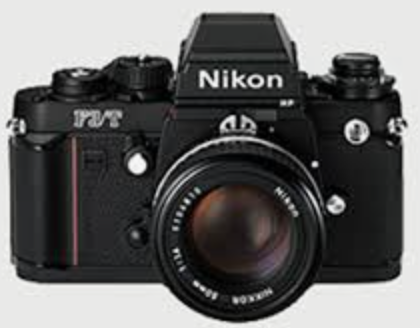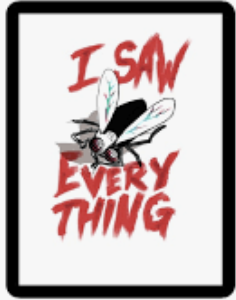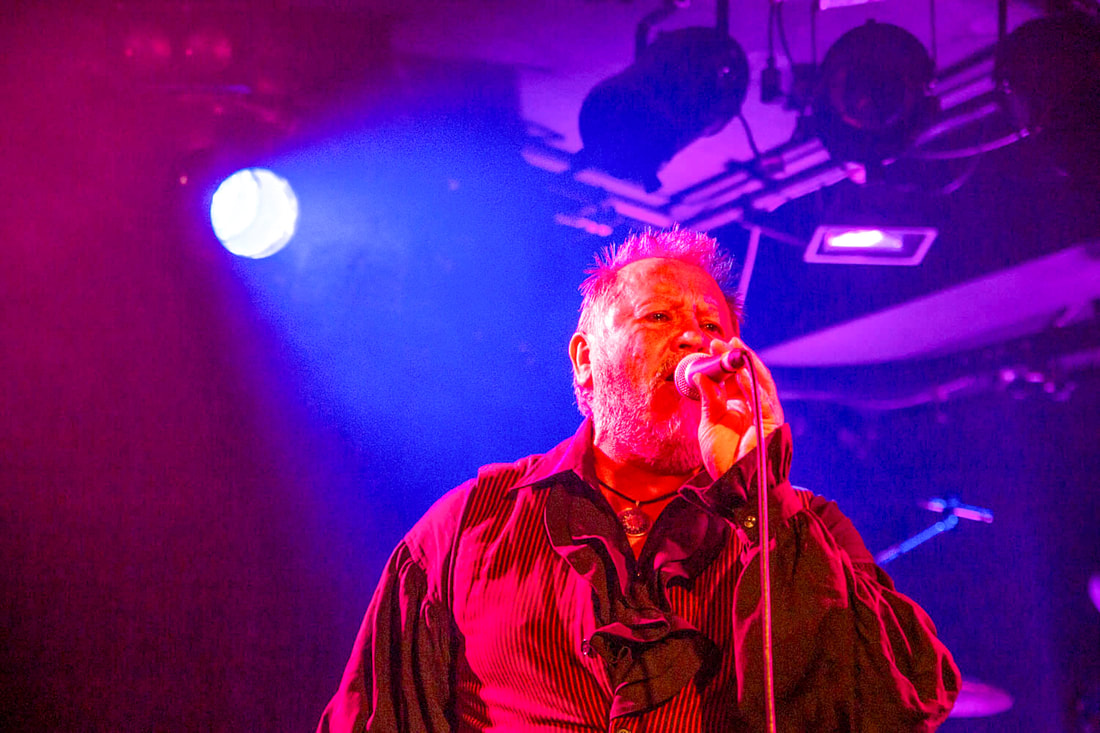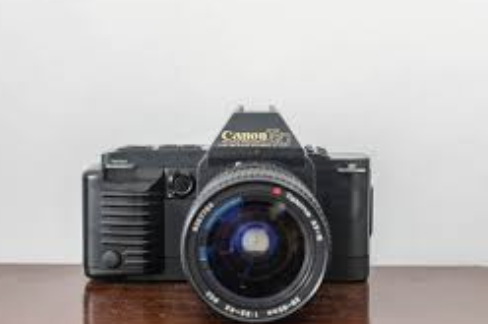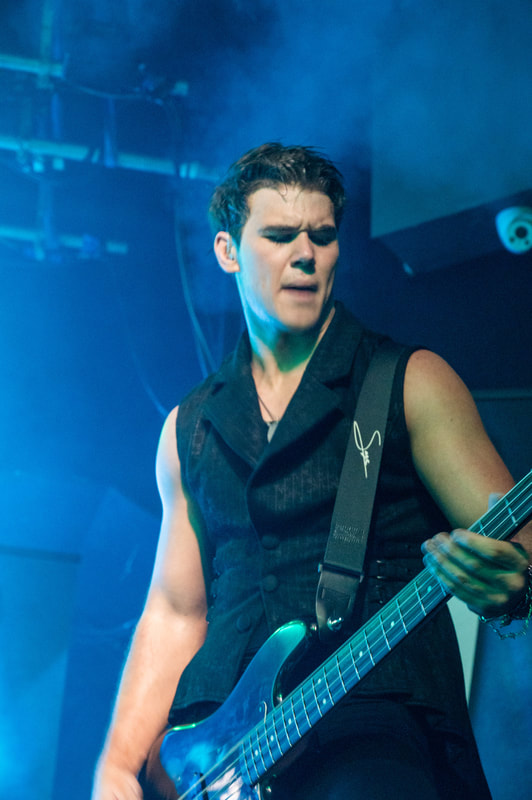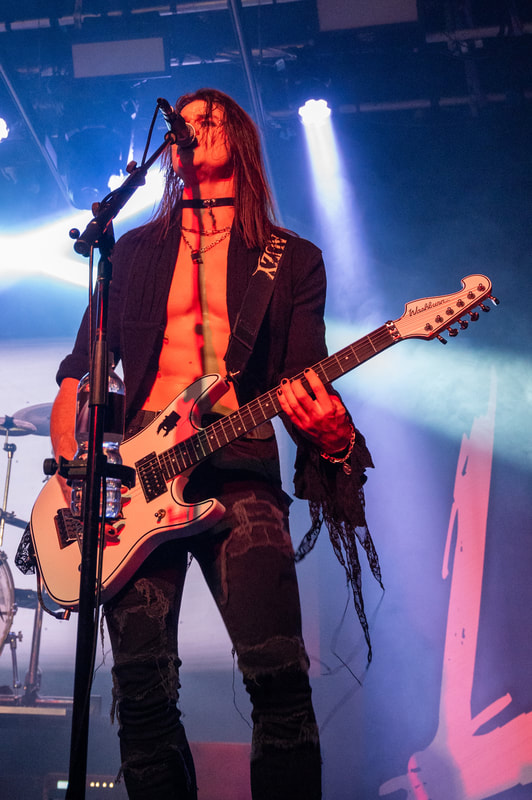 : For live music photography, having the right gear can make all the difference. After plenty of trial and error, I’ve found my ideal setup that lets me capture the atmosphere, energy, and moments of a live gig with precision and detail. Here’s a peek into my camera bag and why each piece is essential for my work. Nikon Z6ii: The Perfect Body for Low-Light Performance: My primary camera body is the Nikon Z6ii. This mirrorless camera has outstanding low-light performance, which is essential for concert photography. Concert venues often have unpredictable lighting, ranging from dimly lit stages to intense spotlight moments, and the Z6ii handles it all beautifully. With its impressive ISO range and minimal noise at high settings, I can capture clear, detailed shots even in the darkest corners of a venue. One of the reasons I opted for a mirrorless model is its compact, lightweight body, which makes it easy to maneuver without drawing attention to myself. The Z6ii’s fast autofocus also allows me to lock onto moving subjects, which is invaluable when shooting active performances where every second counts. Nikkor 24-70mm f/2.8 Lens: Versatile and Reliable Attached to my Z6ii is the Nikkor 24-70mm f/2.8 lens, my go-to lens for most gigs. This lens strikes a perfect balance between wide-angle and close-up capabilities, allowing me to capture both sweeping shots of the entire stage and intimate portraits of individual performers. The 24-70mm focal range is ideal for a variety of compositions, whether I’m in a small venue or a large one, and it means I don’t need to switch lenses frequently. The f/2.8 aperture also performs well in low light, letting me keep the ISO relatively low and still achieve sharp, bright images without the need for flash. This setup not only helps maintain the natural ambiance of the performance but also respects the atmosphere, allowing both the audience and artists to stay immersed in the music. Loop Earplugs: Essential Ear Protection Concert photographers are exposed to high volumes night after night, and ear protection is crucial. For me, Loop earplugs are an essential item in my bag. They’re designed for concert-quality sound, which means I can still hear the music clearly, just at a safer volume. What I love about the Loop earplugs is that they reduce the noise without muffling or distorting the music, preserving the audio experience while safeguarding my hearing. Loop earplugs are also reusable and comfortable to wear for long periods, which is perfect for back-to-back gigs. In a profession where I’m often standing close to the speakers, I consider these earplugs just as essential as my camera itself. Other Essentials: Batteries, Memory Cards, and Cleaning Tools: My camera bag also includes a few staples that keep me prepared for anything. Spare batteries are a must; there’s nothing worse than running out of juice in the middle of an incredible set. I also carry multiple memory cards, so I can shoot without worrying about running out of storage. Finally, a small cleaning kitlens wipes, a microfiber cloth, and an air blower—helps keep my gear in top shape. Concert venues can be dusty, and it’s essential to keep lenses and sensors clean to avoid spots on images. Summing Up: With my Nikon Z6ii, Nikkor 24-70mm lens, and trusty Loop earplugs, I’m equipped to capture all the raw, authentic moments that make live music photography so compelling. This setup allows me to work confidently in any venue, with protection for both my equipment and my hearing. Together, these tools help me bring the energy and essence of every gig to life in a single frame
0 Comments
 In the ever-evolving world of music photography, my passion remains deeply rooted in capturing the essence of live performances. What drives me today is the love of live music and the quest for that one perfect shot—the image that conveys the atmosphere of the gig so clearly that, with a glance, someone can feel as though they were there, caught up in the energy of the crowd. It's more than just photography to me; it's about storytelling through images, giving people a window into a world that they may have missed or preserving the memories of a night they'll never forget. Over the years, my approach to music photography has grown and adapted, but this central motivation has remained constant. Early on, I was still finding my style, moving from being a point-and-shoot photographer to someone who actively seeks out moments where the light, the movement, and the emotion all come together. Today, that search is what keeps me excited for every new gig, constantly striving to improve my craft and capture something unique each time. When it comes to selecting which gigs to shoot, I have a specific approach. Instead of focusing solely on bands or artists, I often start by identifying the venues. The venues are critical because they often dictate the atmosphere and lighting setup, both of which are essential elements in live music photography. Once I know which venues I want to shoot at, I check their schedules to see what gigs are coming up on specific days. This method allows me to balance my availability while ensuring I shoot in environments that offer great potential for the type of photography I love. Recently, I’ve been fortunate to land several exciting gigs that mark important milestones in my journey. One of the most significant upcoming events is photographing Things of Stone & Wood on Melbourne Cup Day. It's a huge opportunity to capture the energy of this iconic Australian folk-rock band, and I’m eager to see how the performance unfolds through my lens. I’ve also been booked for Murray Cook's Soul Movers at the Northcote Social Club, which adds a different favourite to my portfolio. The Northcote Social Club is a venue I’ve shot at before, and it has a great intimate vibe, perfect for capturing both close-up emotional moments and wide crowd shots. I'm looking forward to showcasing the energy and vibrancy that Murray Cook, famously known for his time in The Wiggles, brings to the stage with his current band. Another exciting project is a music festival at the Corner Hotel. Festivals always offer a unique challenge—multiple bands, quick set changes, and diverse lighting setups—making it an excellent opportunity to sharpen my skills and capture a variety of performances. The Corner Hotel is a venue I have a lot of history with, and its dynamic atmosphere will provide plenty of chances to get some truly memorable shots. Perhaps the gig I’m most excited about is the upcoming Sisters Doll show at Max Watts. Sisters Doll are a band I’ve followed and shot for a while now, and their energetic performances always result in some of my favorite photos. Capturing their journey and growth as a band has been a rewarding experience, and this gig promises to be one of their biggest yet. These bookings reflect the trust I’ve built with bands and venues over time and symbolize the progression of my work from an aspiring photographer to a professional actively sought after for major events. Each new project brings its own challenges and learning experiences, pushing me to keep growing both artistically and professionally. In the end, it all comes back to that moment when I press the shutter and know I’ve captured something special—a moment in time that embodies the sound, the mood, and the magic of live music. That’s what keeps me going and what I look forward to with every gig I shoot.  When shooting live music, the best shots often come from the moments that feel most raw and authentic—those split seconds when the performers are entirely lost in their music, and the crowd is fully immersed in the atmosphere. As a photographer, being able to blend into the crowd and capture those moments without disrupting the energy of the event is a skill in itself. Here are some tips on how to be a fly on the wall at concerts and capture those genuine, impactful shots. 1. Dress the Part One of the easiest ways to stay invisible is to dress like a roadie or a member of the crew. Stick to black clothing and comfortable, dark-coloured shoes. Black absorbs light and makes you less noticeable, especially in dimly lit venues. Avoid flashy accessories or anything that could draw attention. 2. Move with Purpose The less you move, the less you'll be noticed, but that doesn’t mean you should be stationary the whole time. When you do need to move, do it with intention. Find opportune moments, like between songs or when the audience is especially loud, to reposition yourself. Move through the crowd quietly and efficiently, keeping a low profile. 3. Master Your Gear Fumbling with your gear is a surefire way to get noticed. Before the show starts, make sure you're completely familiar with your equipment. Know how to adjust your camera settings quickly and quietly, so you're not constantly adjusting in the middle of a performance. If you're using a zoom lens, make sure you can smoothly zoom in and out without jerky movements. 4. Respect the Audience’s Space The audience is just as important as the performers in creating the live music experience. Don’t obstruct anyone's view, and be mindful of where you're standing. Respect the vibe of the venue—sometimes, the best way to get an authentic shot is to stay in the background and let the scene unfold naturally. 5. Anticipate Moments With practice, you'll learn to anticipate key moments in performances, like a guitarist's solo or a drummer's powerful hit. By knowing the music or getting a feel for the band's style, you can be ready to capture these moments without needing to rush or move at the last second. 6. Stay in the Shadows Staying out of the spotlight is crucial. Position yourself in areas of the venue where you're less likely to draw attention, like along the sides of the stage or in darker corners. The goal is to observe and capture the action without being the action. The less you're noticed, the more candid your shots will be. 7. Be Patient Being discreet means not always snapping away at every opportunity. Sometimes, you’ll need to wait for the right shot, staying perfectly still until that authentic moment happens. Patience can lead to some of your most powerful and unexpected images. Final Thoughts: Blending into the crowd isn't just about going unnoticed—it's about respecting the performers and the audience while capturing the essence of a live concert. With the right approach and a bit of practice, you'll learn how to shoot invisibly and, in turn, create images that feel more intimate and authentic.  One of the most memorable gigs I’ve ever shot was Ashers-to-Ashers, a David Bowie tribute band, at the Corner Hotel. The night was not only a tribute to Bowie’s legendary music but also a masterclass in how live music photography can capture both performance and emotion. As a Bowie fan, I was thrilled to photograph this show, but it became so much more than just another gig. It was an experience where the energy of the music, the connection with the audience, and the atmosphere of the venue all came together in a perfect storm. The Corner Hotel, a staple in Melbourne’s live music scene, always sets the stage for incredible moments. Its intimate, yet iconic vibe gives every show an added intensity. With Ashers to Ashers, the energy in the room was palpable from the start. The band’s ability to recreate Bowie’s unique style and essence was remarkable. The lead singer channelled Bowie without overdoing it, creating an authenticity that made you feel like you were watching a living tribute to the legend. One of the greatest challenges in photographing tribute bands is capturing the spirit of the artist they’re honouring. It’s not just about getting technically good shots—it’s about conveying the magic of Bowie through the images. Throughout the performance, I was looking for those fleeting moments that would give the audience the same feeling Bowie’s music does. Whether it was the way the singer moved, the passion in the guitar solos, or the crowd's response, each moment was an opportunity to tell a story. The lighting at the Corner Hotel played a significant role in creating those perfect shots. It was moody, dynamic, and dramatic—ideal for a Bowie tribute. During Starman, there was a moment that stands out as one of my favourite shots from that night. The lead singer was bathed in a pale blue light from behind, while a white spotlight illuminated his front. He was holding the mic in that classic Bowie style, and the entire scene felt like it had been pulled straight out of a cinematic performance. In that instant, I knew I had captured something special. As soon as I pressed the shutter, I felt confident that the image would be one of the highlights of my portfolio. Thanks to my Nikon Z6ii and 24-70mm lens, the photo came out exactly as I’d hoped, crisp and full of emotion. The combination of light and shadow, the dynamic energy of the performance, and the passion of the audience all came together in that shot, making it a standout moment for me. What made this gig truly unforgettable was the emotional connection between the band and the audience. You could feel the collective love for Bowie in the room—people weren’t just attending a tribute gig; they were celebrating a legacy. Being able to capture that emotion and energy through my lens made the night even more meaningful. The Ashers-to-Ashers gig at the Corner Hotel is one I’ll never forget, not just for the great music, but for the opportunity to capture a moment that felt truly timeless. It reminded me why I love live music photography—the magic of freezing a second in time, one that resonates long after the last note fades.  The first time I picked up a camera at a concert was during a Jimmy Barnes gig at the entertainment centre in Melbourne in the mid-1980s. I wasn’t sure what to expect when I brought my camera along, but something inside me told me this would be an experience worth capturing. At the time, I was already intrigued by photography, but live music photography was a completely new realm for me. The atmosphere of that gig was electric—there’s something about a Jimmy Barnes show that just grabs you and pulls you in. The lights were bright and intense, casting bold shadows across the stage, while the sound was loud and raw, with the energy of the crowd feeding into every guitar riff and vocal scream. It was the kind of atmosphere where you feel the music in your bones, and every note seems to vibrate through the air. I still vividly remember one special moment during that gig when one of his guitarists looked straight down the lens of my camera. It was as if the entire room narrowed into that single shot. There was a connection between the performer and my camera, something rare and fleeting that I was able to capture. It ended up being a beautiful photo—one that still stands out to me all these years later as the moment where my passion for live music photography really took off. The experience of shooting that first gig was thrilling. I realized that capturing live performances wasn’t just about freezing a moment in time—it was about translating the energy, emotion, and atmosphere into a visual story. It felt like being part of the music itself, contributing in a way that wasn’t just about watching but about immortalizing the performance through my lens. That Jimmy Barnes gig sparked a journey for me. From that moment, I knew I wanted to keep doing this, to keep finding those perfect moments that tell the story of a gig. That was the start of everything, and it’s what eventually brought me to where I am today, pursuing live music photography as both a passion and a profession.  Photographing drummers like Bryce from Sisters Doll presents a unique challenge. Drummers, often tucked away at the back of the stage, bring an intense energy that’s crucial to capture but can be tricky to photograph. Here are a few tips to ensure your shots reflect the rhythm and motion of their performance: 1. Anticipate Movement: Drummers are always in motion, and the key to great shots is anticipating that movement. Watch the drummer's patterns during the performance—observe their arms, sticks, and footwork. With Bryce, for example, you can expect powerful strikes and dynamic body language, so time your shots just before or after a hit to freeze the motion at its peak. 2. Use a Fast Shutter Speed: To freeze the fast movements of a drummer, use a shutter speed of at least 1/250 second or faster. A high shutter speed will reduce motion blur, capturing every rapid drumstick strike and cymbal crash. Depending on the lighting, you may need to adjust your ISO to maintain exposure. 3. Capture the Emotion: Drummers like Bryce are not just about beats—they express emotion through their performance. Focus on their facial expressions and the way they interact with the drums. These moments are gold in telling the story of their passion and connection to the music. 4. Embrace Motion Blur: While freezing motion is key, intentional motion blur can also add a sense of speed and intensity to your shots. If you slow down your shutter speed slightly (around 1/60 or 1/100 second), you can blur the drumsticks while keeping the drummer sharp, adding an artistic effect that highlights the action. 5. Find Unique Angles Drummers are often behind their kits, obscured by cymbals or other equipment. Move around the stage to find interesting angles. Capture Bryce from the side or slightly below to add depth to your shot. If the venue allows, shooting from the back of the stage can also create a dynamic perspective that includes the audience and the rest of the band. 6. Leverage Lighting: Concert lighting can be your best friend or worst enemy. Pay attention to how the lights hit the drummer. In some moments, Bryce might be illuminated perfectly, allowing you to capture the spotlight on him. Try to avoid shooting in harsh backlighting unless you’re going for silhouettes. Use the stage lights to your advantage to highlight both the movement and the mood. 7. Burst Mode for Action Shots Burst mode allows you to take a rapid sequence of shots, increasing your chances of capturing the perfect moment. With Bryce’s fast-paced drumming style, you’ll need this feature to catch the subtle differences in each strike and expression. 8. Focus on Details: While the entire kit and drummer in motion make for powerful images, don't forget to zoom in on the details. Close-ups of Bryce's hands gripping the sticks or his footwork on the kick pedal add depth and texture to your photo set, telling a more complete story of his performance. Photographing drummers requires patience, timing, and creativity. With these tips, you can overcome the challenges of stage placement and motion to create impactful images that capture the heart-pounding energy of drummers like Bryce.  Sisters Doll is a band that truly knows how to captivate an audience, delivering raw energy and a commanding stage presence. When I photographed them at Northcote Social Club, it was clear that this gig was an important moment for the band as they built momentum towards their upcoming album launch at Max Watts on January 25th. At the time of this performance, the lineup consisted of Brennan (lead vocals/guitar), Bryce (drums), and Austin (lead guitar). Sage, who would later join as the band’s bassist, was yet to be part of the group. Photographing the Show: Glam Rock in Motion: The Northcote Social Club, an intimate venue with a devoted crowd, set the perfect stage for Sisters Doll’s high-energy performance. As a photographer, my aim was to capture both the band’s musical prowess and their connection with the audience. From the first chord to the final encore, Brennan, Bryce, and Austin were in full control of the stage, showcasing their distinctive glam rock sound while engaging with fans who sang along to every song. One of the standout moments I captured that night was during Brennan’s explosive guitar riffs. He moved across the stage with precision and flair, bathed in dramatic lighting that enhanced his larger-than-life persona. Bryce was a force behind the drum kit, pounding out rhythms with intensity, while Austin’s guitar solos sent waves of energy through the crowd. I made sure to capture the trio in sync, each of them contributing to the band’s electrifying presence. Sisters Doll’s Journey: From Humble Beginnings to Big Stages: Sisters Doll’s journey began in Western Australia, with Brennan, Bryce, and Austin united by their love for glam rock legends like KISS and Mötley Crüe. The brothers worked tirelessly, starting in small venues and gradually building their reputation within the Australian music scene. Their big break came in 2016 when they appeared on Australia’s Got Talent, where they gained national recognition for their theatrical performances and bold rock sound. During a chat with the band after their Northcote gig, Brennan reflected on how far they’ve come. “We’ve always been passionate about the music we play, and that’s what keeps us going,” he said. “This journey hasn’t been easy, but it’s been worth every moment.” The Northcote show was part of their lead-up to their biggest show yet, the album launch at Max Watts, a significant milestone in their career. A Look Ahead: With their new album set to launch in January, Sisters Doll is poised for even bigger things. Their fans, affectionately known as the Doll Army, have stood by them through every step, and the band remains committed to delivering powerful performances that keep audiences coming back for more. Sage’s addition to the band later on further strengthened their lineup, and the band continues to evolve. Capturing Sisters Doll at Northcote Social Club was a glimpse into the heart of a band on the rise. Their journey from small-town gigs to major stages is a testament to their perseverance, and I’m excited to see what’s next for them as they continue to make waves in the rock scene.  As a live music photographer, I have had the pleasure of shooting at various venues, each offering unique experiences that impact how you capture the moment. Two of my favourite venues to work at are the Corner Hotel in Richmond and Stay Gold in Brunswick. While both are excellent in their own ways, they present different challenges and advantages that affect the quality of the photos and overall experience. Corner Hotel Pros: The Corner Hotel is one of Melbourne's iconic live music venues, and it offers several advantages for photographers. One of the standout features is the accessibility of backstage areas, where photographers can store their gear, freeing you from having to lug heavy equipment around the crowd. This is particularly helpful for longer gigs where you need easy access to lenses, batteries, and other essentials. Another pro is that there's enough room to move around the crowd while shooting, giving you the flexibility to find the best angles and capture unique perspectives. This ability to move around without feeling cramped adds to the dynamic energy you can bring to your shots. The presence of a dedicated photography pit is a huge benefit for professionals. The barrier not only keeps the crowd at bay but also ensures you have a clear view of the stage without having to worry about getting jostled by eager fans. It also gives you space to experiment with different shots, from wide crowd images to close-ups of the musicians. Additionally, the atmosphere at the Corner Hotel is often electric. When the band is great, the crowd’s energy matches it, and this synergy translates into more compelling photos. You can almost feel the music through the lens, and it adds an intangible but essential quality to the images you capture. Cons: The biggest challenge with the Corner Hotel, as a photographer, is the lighting. The venue tends to favour red, orange, and purple lights, which can be tricky to work with. These colours are difficult to shoot because they often wash out details and create a flat look in the images, especially if the lighting setup is too harsh or too concentrated on one area. Bright white lights, when used sporadically, can also blow out your shots, leaving little room for postproduction corrections. These lighting choices can force you to shoot in manual mode, constantly adjusting your settings to find the right balance. If you're not prepared for it, this can lead to frustratingly inconsistent shots. Stay Gold Pros: Stay Gold is another fantastic venue that I have a soft spot for. One of the biggest pros is the stage setup. The stage is a great size—not too big, not too small—allowing for intimate but energetic performances. As a photographer, the stage layout gives you a variety of angles to work with, from tight close-ups to wider, crowd-inclusive shots. This versatility is crucial for creating a diverse portfolio of images from a single gig. Another advantage at Stay Gold is the lighting. Unlike the Corner Hotel, Stay Gold offers lighting that is much more forgiving for photographers. The lights are generally well-balanced, and you don’t have to worry as much about harsh reds or purples dominating your shots. This allows for more natural skin tones and better contrast in the images, which reduces the amount of post-editing needed. The atmosphere at Stay Gold is always vibrant, and it's a place where both bands and fans seem to feed off each other's energy. This, combined with the venue's intimate setting, makes it easier to capture those raw, emotional moments that make for great live music photography. Another plus is security. They know me well here, and this familiarity adds a layer of comfort and safety while working. It makes navigating through the crowd and accessing different parts of the venue easier, without worrying about equipment or personal space. Cons: Honestly, I haven’t found any major cons at Stay Gold. It’s a venue that ticks all the boxes for me as a live music photographer. Conclusion In summary, both the Corner Hotel and Stay Gold have their strengths and challenges. The Corner Hotel’s spaciousness and professional setup make it ideal for larger gigs, but the lighting can pose a challenge. On the other hand, Stay Gold offers better lighting and a more intimate atmosphere, making it an easier, more enjoyable venue to shoot at. While the lighting at the Corner Hotel requires more technical finesse, both venues deliver in terms of atmosphere and crowd engagement, which are vital for capturing the essence of live music.  Shooting a live gig is an exhilarating and fast-paced experience that requires both creativity and technical expertise. As a live music photographer, I’ve captured performances in venues ranging from the intimate space of The Gasometer to larger spots like The Corner Hotel. Each show brings its own set of challenges, from lighting to movement, but that’s what makes it so thrilling. Here’s a step-by-step look at what it’s like to shoot a live show, from preparation to post-production. Pre-Show: Arriving at the Venue I always arrive at the venue at least an hour before the doors open. This time is crucial because it gives me a chance to scout the stage setup and lighting arrangements, which helps me anticipate how I’ll shoot the performance. At venues like The Gasometer, where space is limited, positioning is key. For larger venues like the Corner Hotel, I have the freedom to move around more, which allows me to capture a wider variety of angles. While waiting for the doors to open, I usually run through my gear checklist. I shoot with a Nikon Z6ii and a Nikkor 24-70mm lens, which is perfect for lowlight conditions and offers great versatility when switching between wide shots and close-ups. I always carry extra batteries, memory cards, and lens wipesespecially at smaller, sweatier venues where moisture can affect the lens. Setting Up: Shooting in Aperture Priority Mode Once inside, I set my camera to Aperture Priority mode, which allows me to control the depth of field while the camera automatically adjusts the shutter speed. This is especially useful in live music photography, where lighting can change in an instant, and I need to stay focused on capturing the right moments rather than constantly adjusting my settings. I typically shoot with a wide aperture (around f/2.8 to f/4) to create a shallow depth of field, which helps isolate the performers from the background. For live gigs, the lighting can be unpredictable, so I also crank the ISO up to between 3200 and 6400. While this higher ISO setting introduces some noise, it’s essential for maintaining a fast enough shutter speed to freeze the action in lowlight conditions. I rely on the Z6ii’s excellent low-light performance to keep the images clean even at higher ISOs. Capturing Key Moments During the Performance As the show begins, the energy of the night takes over. My goal is to capture the emotion and intensity of the performance—from the singer’s expressive vocals to the drummer’s focused intensity. In smaller venues like The Gasometer, I often find myself working with limited space, so I have to be mindful of the crowd while still getting close enough to capture the action. At larger venues like the Corner Hotel, I have more room to move around and can experiment with different angles, like wide shots of the entire band or close-ups of individual musicians. Shooting in Aperture Priority means I can focus on framing and timing, but I still keep an eye on the camera’s shutter speed. If the stage lighting dims too much, I may manually increase the ISO even further to prevent motion blur. Concert lighting often includes intense reds, blues, and strobes, which can make capturing accurate skin tones and clear details difficult, so I constantly adjust my positioning and exposure to adapt to the changing conditions. One of the biggest challenges is knowing when to anticipate the "big moments"—like a guitarist hitting a high note during a solo or a lead singer connecting with the crowd. These are the moments that define the night, and capturing them requires a mix of experience and instinct. During one of my shoots at the Ecos Pink Floyd tribute show at the Corner Hotel, I caught a perfectly timed shot when the lighting hit the singer’s hand just right, a moment I’ve since titled “Mr Hand.” Post-Show: Editing in Lightroom Classic: Once the show is over, the next stage of the process begins: post-production. I import all the photos into Lightroom Classic, where I begin the first round of culling. I rate each photo on a scale of 1 to 5 stars, which helps me quickly narrow down the best shots. Images rated 1 or 2 are usually blurry, poorly lit, or simply don’t capture the right moment, so they get deleted. The 3-star shots are decent but might need more editing to bring out their potential, while the 4- and 5-star photos are my top picks that just need fine-tuning. Editing Process Once I’ve sorted the photos, I dive into the editing process. My main focus is on correcting exposure and white balance. Since I often shoot in high ISO ranges (3200-6400) to deal with low light, noise can be an issue, so I use Lightroom’s noise reduction tools to clean up the images while preserving as much detail as possible. Stage lighting at live shows is unpredictable—one second the performers are bathed in deep red, and the next, they’re hit with a blinding white spotlight. I usually start by adjusting the white balance to make the skin tones look more natural, then tweak the shadows and highlights to bring out details in the darker parts of the image. I also adjust the contrast and saturation to enhance the mood of the performance, making sure the photos still reflect the raw energy of the night. For certain shots, especially those where the lighting is dramatic or intense, I might convert the image to black and white. This technique strips away distracting colours and focuses the viewer’s attention on the emotion and composition of the shot. Black and white edits work especially well for closeups of musicians where the lighting highlights their expressions. The Final Product: After editing, I export the final images and deliver them to the band or client. Each photo tells part of the story of the night—capturing the atmosphere, the energy, and the emotional connection between the performers and their audience. Shooting live music is challenging, but it’s also incredibly rewarding when you see those fleeting moments preserved in a photograph. Whether I’m shooting in a small, cozy venue like The Gasometer or a larger venue like The Corner Hotel, each gig presents its own set of challenges and opportunities. Shooting in Aperture Priority mode with a high ISO helps me adapt to the constantly changing lighting conditions, while post-production in Lightroom Classic allows me to bring out the best in each shot. In the end, it’s all about capturing the magic of live music—the passion, the intensity, and the moments that make every performance unique.  Capturing the raw emotion of a live performance is at the heart of great music photography. It’s not just about freezing a moment in time but about immortalizing the feelings, the energy, and the passion that radiates from the stage. As a live music photographer, it’s important to tune into the energy of the musicians and the crowd, letting the rhythm of the music guide you to the perfect shot. I’ve found that the key to capturing emotion lies in observing subtle details, such as facial expressions, body language, and the dynamic interplay between band members. Shooting Close-Ups of Facial Expressions Facial expressions are often the most immediate window into a performer’s emotional state. Whether it’s the intensity of a guitarist lost in a solo, a vocalist belting out a powerful lyric, or a drummer locked into the groove, these moments tell a story of passion, vulnerability, or pure joy. To capture these expressions, I always try to position myself close to the stage or use a lens that allows for tight framing. My Nikon Z6ii with a 24-70mm lens offers versatility, letting me zoom in on a musician’s face without losing the energy of the environment. I follow the performer’s movements, waiting for that split second when they connect deeply with the music. Sometimes, it’s in the furrow of their brow, the closing of their eyes, or the tension in their lips. These are the moments that resonate most with viewers because they reveal the true intensity of the performance. Highlighting Body Language While facial expressions are essential, body language can often tell an equally powerful story. Whether it’s the leap of a guitarist in mid-air, a drummer hunched over his kit, or the stance of a lead singer owning the stage, body language communicates confidence, vulnerability, and everything in between. Capturing these movements requires anticipating the performer’s next move, which comes from being in sync with the rhythm of the music. When I shoot live music, I often rely on my gut instinct. If I feel that a particularly energetic part of the song is approaching, I’ll position myself in a spot where I can capture the full movement. My experience shooting different genres of music has taught me that every genre has its unique body languagewhether it’s the frenetic energy of a punk show or the slow sway of a jazz performance. Capturing the Energy Between Band Members One of the most dynamic aspects of live performance is the interaction between band members. Musicians often communicate through eye contact, gestures, or shared smiles, and capturing these moments of connection can add depth to a photo. These interactions showcase the camaraderie and chemistry that fuel the performance. I’ve found that these moments often happen spontaneously, so it’s important to always stay alert. For example, during the Ecos Pink Floyd show at the Corner Hotel, I captured a shot that became one of my portfolio favourites: "Mr Hand." The way the light hit the singer as they gestured towards the guitarist created a moment of magic. The shot wasn't planned, but it was the result of staying in tune with the energy of the performance and being ready to seize the moment. Trusting My Instincts In live music photography, there’s no formula for capturing emotion. It requires a deep connection with the music and the performers, as well as the ability to trust your instincts. I often let the music dictate where I position myself in the venue—sometimes that means staying close to the stage, while other times I’ll move around to find the best angle or lighting. Ultimately, the art of capturing emotion is about being present in the moment. By following the music and trusting my gut, I’m able to capture shots that convey not just the visuals of the performance, but the soul of the experience. |
AuthorI am a live music photographer, who loves travelling and taking photos of live music! Archives
March 2025
Categories |

